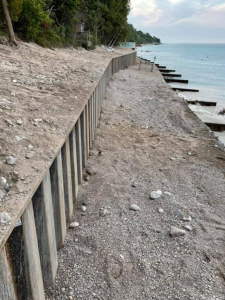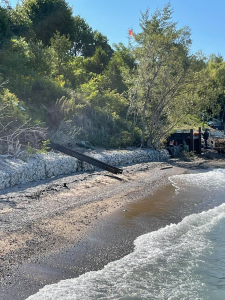If you live near or visit a shoreline, you’ve probably seen large walls built out into the water. These are called shoring walls, and their purpose is to protect against erosion and flooding. Shoring walls can be made of different materials, but they all have one thing in common. They’re designed to withstand the powerful forces of nature. In this post, we’ll take a closer look at how shoring walls are constructed and why they’re such an important part of protecting our shoreline. Keep reading to learn more!
What Are Shoring Walls?
 Shoring walls are structures that are built along the shoreline to help stabilize it and reduce erosion. They’re typically made of concrete, steel, or stone. The wall itself creates a barrier between land and sea, so waves crashing against the shore don’t erode away important coastal habitat. Shoring walls can also be used as flood protection by deflecting water away from low-lying areas or redirecting it downriver.
Shoring walls are structures that are built along the shoreline to help stabilize it and reduce erosion. They’re typically made of concrete, steel, or stone. The wall itself creates a barrier between land and sea, so waves crashing against the shore don’t erode away important coastal habitat. Shoring walls can also be used as flood protection by deflecting water away from low-lying areas or redirecting it downriver.
How Are Shoring Walls Constructed?
The construction of shoring walls depends on the type of material being used and the size of the project. For smaller projects like homeowner’s beachfronts, shoring walls may be constructed using pre-cast concrete panels held in place with rebar anchors. For large-scale projects, like those used to protect ports and harbors, steel sheet piling may be driven deep into the ground. The wall is then filled with concrete or stone to create a solid barrier against water and erosion. There are many installation methods and can vary by company.
Why Are Shoring Walls Important?
 Shoring walls are an important part of coastal engineering. Not only do they help protect land from flooding and erosion, but they also provide habitats for marine life. They can also be used as breakwaters to reduce wave energy in areas prone to storms and hurricanes. Furthermore, shoring walls can help preserve historical sites by protecting them from the effects of rising sea levels.
Shoring walls are an important part of coastal engineering. Not only do they help protect land from flooding and erosion, but they also provide habitats for marine life. They can also be used as breakwaters to reduce wave energy in areas prone to storms and hurricanes. Furthermore, shoring walls can help preserve historical sites by protecting them from the effects of rising sea levels.
In summary, shoring walls are essential structures that protect our shorelines from flooding and erosion while also providing ecological benefits. They can be constructed using various materials, including concrete, steel, and stone. Knowing how shoring walls are built and why they’re important is key to maintaining a healthy shoreline ecosystem.